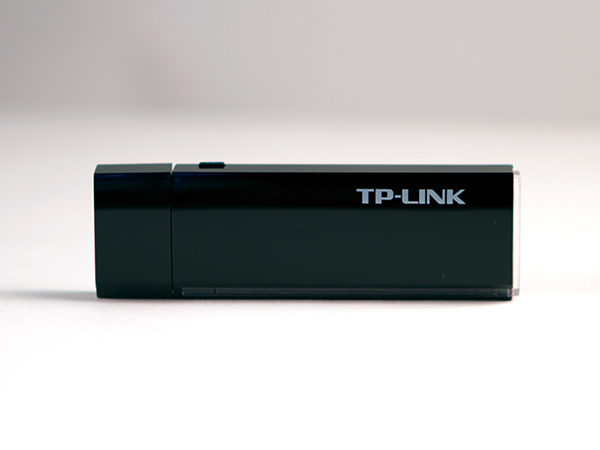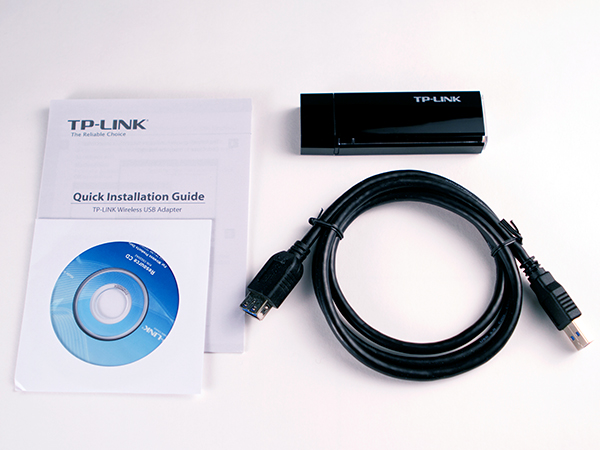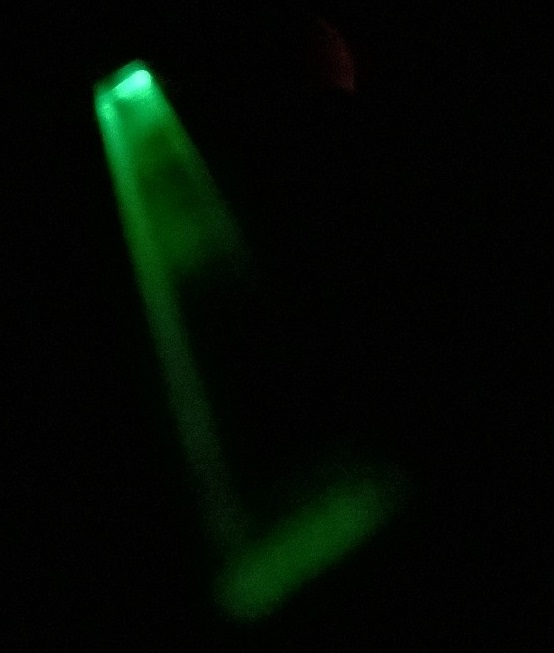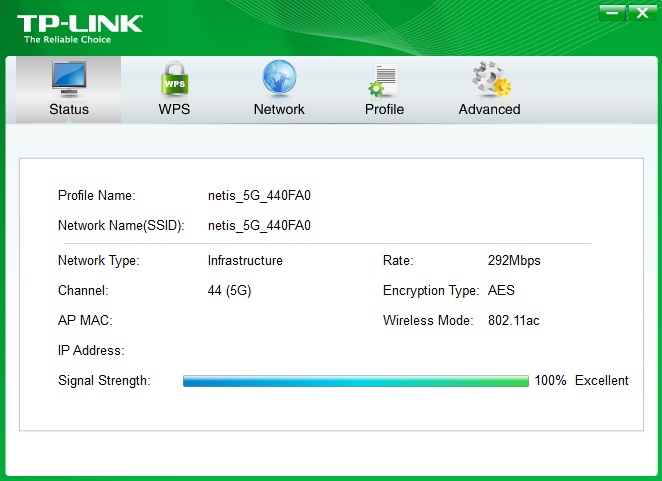AC1200 USB Wi-Fi Adapter Round-Up
Routers get all attention when it comes to Wi-Fi networking, but picking the right adapter is just as important. Today we test four 802.11ac USB adapters.
TP-Link Archer T4U
Why you can trust Tom's Hardware
The Archer T4U is TP-Link's current-gen USB-attached AC1200 Wi-Fi adapter with an omnidirectional antenna and a USB extension cable to help optimize signal strength.
TP-Link is a frequent favorite with our forum members because its products tend to cost less than the competition. In this line-up, the Archer T4U is indeed the least-expensive contender.
Specs
- AC1200, up to 300 Mb/s on 2.4GHz and 867 Mb/s on 5GHz band
- USB 3.0, backward compatible with USB 2.0
- Omnidirectional internal antenna
- Supports 802.11ac, 802.11n, 802.11g and 802.11a
TP-Link includes the following in the box:
- T4U Wi-Fi USB adapter
- Software CD
- Quick-start guide
- USB extension cable
This is the only adapter that comes with an 80mm mini CD, which is great for saving space. But it also makes the install a little slower since the outer edges of the media can't be read as fast as a 120mm disc. TP-Link's manual is available as a PDF file on the CD.
Features
TP-Link's Archer T4U includes all of the features you'd expect, including a WPS button on the adapter and a status LED, which lights up green. The antenna is fully internal, facilitating a smaller profile than some of the other contenders. Overall, the Archer T4U's chassis is kind of square and chunky, and the plastic feels less durable than its competition. It's particularly glossy and shiny, which makes it prone to scratches, too.
Standouts
The aforementioned LED transmits light down a strip of clear plastic. This is a clever trick that makes the output look like more than a single LED. In fact, no other USB adapter in our round-up is as bright. If you're gaming on a tricked-out PC or notebook, the Archer T4U will look right at home.
General Observations
In use, the Archer T4U struggled to maintain a consistent connection on both the 2.4 and 5GHz bands. It occasionally lagged and encountered delays opening Web pages, both issues not seen from the other products we're reviewing. This translated to inconsistent performance in our benchmarks.
1: USB 3.0 connector
2: WPS button
3: Dual internal antenna (both are indicated)
4: LED
Note the lack of an RF shield over the circuitry. We asked TP-Link about this and confirmed that no parts were missing. Apparently, this design was chosen for certification reasons. Still, given the Archer T4U's instability during our tests, we have to question the lack of a component used by competing adapters.
Management
TP-Link's software can manage your Wi-Fi settings if you want it to. While the utility does not provide a Windows Network Settings map, other essential information is there, including the SSID, type of network, type of encryption, wireless mode and a transfer rate estimate.
There are also two advanced features for power users: SoftAP mode and power-save mode. Both are toggled off by default. The driver we used for testing was V1_141219.
Availability/Warranty/Pricing
The Archer T4U has a list price of $50 and a street price on Amazon of $30. Both of those prices make this the least-expensive adapter in our review. TP-Link includes a two-year warranty.
Get Tom's Hardware's best news and in-depth reviews, straight to your inbox.

Jonas P. DeMuro is a freelance reviewer covering wireless networking hardware.
-
SamSerious For notebooks these sticks look great, but as great as a flip-up antenna may be compared to the slim sticks, they will never be as good as those porducts where you can put a big omnidiretional antenna on. Therefore for users with bigger desktop computers, a PCIe adapter with multiple swapable antennas is still the way to go.Reply -
Math Geek did not take me long to realize that a usb stick on the back of a pc under a desk surrounded by a massive bundle of various cables was not the optimal way to go about wifi on a pc :)Reply
i always get the stick up in the air and away from the pc and easily see double the performance this way. can't tell you how many times i went to a client's house to see about wifi problems and fixed all the problems by simply putting the usb stick on an extension cable and taping it to the wall above the pc. BOOM instant signal and throughput gain.
as a result i look for internal cards with antennas on cables i can raise up or usb sticks that come with extension cables. just my personal experience anyway. -
gangrel Math Geek: yes! It applies to any kind of wireless. I like Logitech keyboard/mouse because the Microsoft transceivers have been far more problematic, and I greatly prefer wireless. Shifting that away from the chassis is helpful...and having it too near a WiFi antenna does increase problems.Reply
tb7: check the manufacturers' pages to see if they're showing Linux drivers, at least as a first step. Not, as I think you know, that this guarantees they'll work. But it'll be a heckuva lot faster for you to do the research, than to wait on the chance that someone here has done it. Better chance is to skip USB and go PCI; for whatever reason, PCI network cards install much more often, and more easily. -
Math Geek here's another thought since am actually in the middle of trying to figure this out. i wonder if the writer of this article knows a bit more about the features on these dongles?Reply
my lg phone is very easy to connect to my roku stick using the miracast feature. win 8.1 had this as a beta feature and i was able to use it on my laptop. win 10 has finished this feature and it is now built into windows. sadly, the finalized version does not work on my laptop like it did on win 8.1. best i can tell is that the wifi card is too old and does not support the finalized feature. i can get over that as the laptop is a few years old.
i would also like my desktop to connect the same way but my even older wifi dongle (n rated one) on my pc does not support it either. i can't find anything in any feature list for any brand wifi stick that says it supports the wifidirect standard that miracast uses.
does anyone know how/where it is listed or is it safe to assume it is there for any newer dongle i buy. i was going to try my luck and get a new ac model assuming it would be new enough to have it supported but would rather not play the guessing game with multiple models if it is not going to be universally supported. i can't find a list of supported hardware online nor any reference to wifidirect on any info sheet anywhere. :(
anyone know anything about this as it would be nice to wirelessly share my pc with my roku stick in another room. my phone does this no problem and it is a cheap model so this is not exactly a high end feature just one that lg supports very well.
note: wifidirect/miracast is not the same thing as the dlna that some other options use. i have no interest in buying a chromecast stick or anything else other than a new wifi stick. i want to use the roku stick i already have and use daily. :) -
gangrel Look here:Reply
https://www.wi-fi.org/product-finder-results?subcategories=23
Not many right now.
Readiing here:
http://www.broadcom.com/blog/home-entertainment/a-miracast-enabled-future-next-gen-screencasting-brings-your-content-to-life-video-demo/
the problem would appear to be, that router support is required, and may not be all that common. That suggests support in adapters will be slow. -
Math Geek Reply16724138 said:Look here:
https://www.wi-fi.org/product-finder-results?subcategories=23
i have been on that site and played with the search feature but was not able to get this subcategory. i only found a bunch of monitors and routers that worked :(
but hey thanks. now maybe i can finally figure out what i need to buy. book marking that search so i can find it again :D -
dstarr3 ReplyFor notebooks these sticks look great, but as great as a flip-up antenna may be compared to the slim sticks, they will never be as good as those porducts where you can put a big omnidiretional antenna on. Therefore for users with bigger desktop computers, a PCIe adapter with multiple swapable antennas is still the way to go.
Well, I'm building a mini-ITX build for the living room, and the only PCIe slot will be consumed by the GPU. There are motherboards with WiFi built in, but there are better boards that don't. So, this is a very good solution for those kinds of builds, as well. -
Math Geek Reply16724213 said:Math: check the Broadcom blurb I posted a bit late. :)
interesting article but that goes against what i thought wifidirect/miracast does. the feature uses the wifi cards in both devices to make a direct connection and pass data between them. a router should not come into play here. i think the article is saying the router will able to connect through miracast and then anything connected to the router will be able to use the data. at least this is how i read it :)
for instance just for giggles last time i was in sam's club i connected my phone to one of the lg tv's (miracast actually recognized about 10 different ones i could connect to) and mirrored my screen to the oohs and aaahhhhhs of the other shoppers who did not now they could do this. now this was done without any wifi connection at all. i was not on the store network and the tv was connected to none either. a couple other shoppers pulled out their phones and in a few minutes of showing them where the settings were, we had about 6 screen going with our phones mirrored.
this is why i read the article the way i do, since i know no actual wifi is needed, only compatible wifi cards. this is how it kills latency and such by being a direct connection between the devices with no middle man. it really is a neat feature and once it takes off, we'll all wonder how we lived without it. i watch movies from my phone to my tv all the time since it is easy to do and much easier than connecting my pc to my tv in the other room. hence my wish for a wifi dongle that works so i can do this from my pc and save my phone battery some :)





